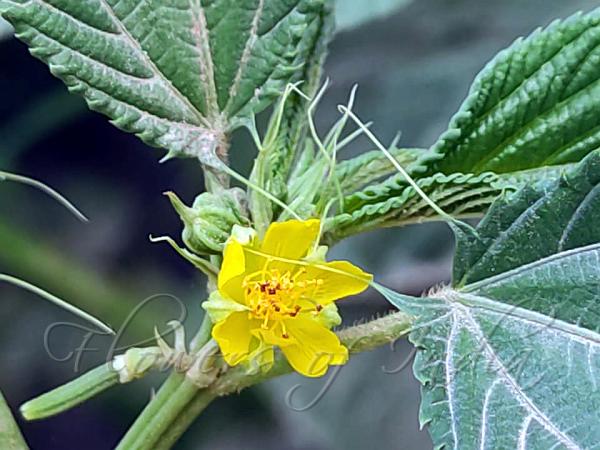|
| Nalta Jute |
|

|

|
|
|
|
Photo: |
Botanical name: Corchorus olitorius Family: Tiliaceae (Falsa family)
Nalta Jute is a variety of jute grown for its young edible shoots,
which are used in cooking. Native to India, nalta jute is cultivated in
warm regions, including Egypt and the southern United States. It is an
annual, much-branched herb 90-120 cm tall. Leaves are 6-10 cm long, 3.5-5
cm broad, ovate-lanceshaped, sawtoothed, the lower serratures on
each side prolonged into a filament-like appendage over 6 mm long. The
leaves are rounded at the base; leaf stalks 2-2.5 cm long. Flowers are pale
yellow; bracts lance-like. Sepals are 3 mm long, oblong. Petals are 5 mm long,
oblong spoon-shaped. Stamens are 10 to many, free, filaments short, anthers
small, bilobed. Capsules are 3-6.5 cm long, thin, cylindric erect. While
perhaps better known as a fiber crop, Nalta Jute is also a medicinal
"vegetable", eaten from Tanganyika to Egypt. In India the leaves and
tender shoots are eaten. The dried material is known as "nalita."
Medicinal uses: Ayurvedics use the leaves for ascites, pain,
piles, and tumors. Elsewhere the leaves are used for cystitis, dysuria, fever, and gonorrhea. The cold infusion is said to restore the appetite and strength.
Ayurvedics use the leaves for ascites, pain,
piles, and tumors. Elsewhere the leaves are used for cystitis, dysuria, fever, and gonorrhea. The cold infusion is said to restore the appetite and strength.
• Is this flower misidentified? If yes,
Medicinal uses:
 Ayurvedics use the leaves for ascites, pain,
piles, and tumors. Elsewhere the leaves are used for cystitis, dysuria, fever, and gonorrhea. The cold infusion is said to restore the appetite and strength.
Ayurvedics use the leaves for ascites, pain,
piles, and tumors. Elsewhere the leaves are used for cystitis, dysuria, fever, and gonorrhea. The cold infusion is said to restore the appetite and strength.
| Identification credit: Maniruddin Dhabak | Photographed in Manipur & Maharashtra. |
• Is this flower misidentified? If yes,